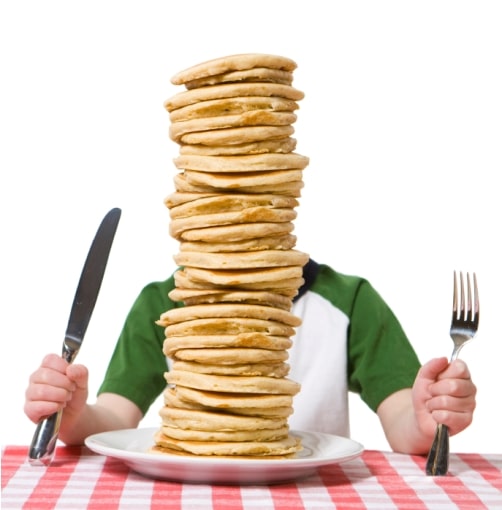What Presentations And Pancakes Have In Common
I woke up with an intense craving for golden, fluffy, hot, spongy pancakes with a crispy edge.
I rarely eat pancakes. But this morning the desire was strong. My mind was deluged with the smell of fresh pancakes on the griddle, the sound of the batter hitting the pan and the sight of a pancake made in the shape of an animal with a chocolate chip as an eye. Childhood memories flooded my mind.
So what do successful presentations and great pancakes have in common?
Actually a lot.
1. The right ingredients
Both presentations and pancakes need the right ingredients to succeed. Presentations need the right balance of content, audience participation, sensory engagement and correct delivery styles for success. Pancakes need the right mix of flour, baking powder, salt, sugar, eggs, butter and milk.
2. Mixing ingredients slowly and intentionally
The secret to a great pancake is a good, smooth batter without over mixing it. Some cooks say to pour the flour in gradually instead of all at once. Using a flat whisk with restrained mixing also adds air to the batter.
Good presentations unveil the content step-by-step, instead of an information dump. Presenters use restraint when developing content and intentionally schedule breathing room where participants have time to connect new content to past information.
3. The right items add flavor to the mix
As Julia Childs said, “Everything tastes better with butter.” Can you imagine a hot, honey-brown pancake without melting, drippy butter? I can’t! And if you want a fluffier pancake, use buttermilk. It adds extra plump to the batter.
To paraphrase Childs, “Every presentation is better with audience participation.”Adding active audience engagement is like adding extra plump to pancake batter. The right engagement improves the presentation experience dramatically. It allows the participant the ability to process information and make meaning from it.
4. Matching the batter to the grill heat
Matching the pancake batter to the right grill heat is the trickiest part of cooking pancakes. Get the temperature too hot and the edges of the pancake burn as the middle stays raw. Get it too cold and the batter never cooks. Use a heavier pancake batter like buckwheat and the temperature needs to be lowered almost 10 degrees so as not to burn it.
Just like pancakes, presenters need to match the content and schedule to the learner. Provide too much content and the learner feels overwhelmed. Dump the content on the learner fast and the learner feels unable to use the information. They’ll end up over-whelmed and over-heated. If the content is difficult to understand, the presenter needs to slow the pace, use lots of analogies and focus on three to five main points for the leaner. If not, the learner may feel burned-out by the information overload.
5. Timing is everything
A pancake is starting to cook when its outer rim dries and dry-edged bubbles appear on top. If the underside is golden brown, it’s time to flip the pancake. Once both sides are golden brown, it’s time to stack and serve.
During a presentation, timing is everything. If the presenter spends too much time lecturing, the audience becomes disinterested. Ignore the audience’s body language and facial expressions, and the presenter misses the opportunity to reteach or connect with the audience.
6. Best served with bacon
Nough said! A bit of sizzle always add to the experience.
What other ways are successful presentations like great pancakes? Add your ideas in the comments section.



[…] This post was mentioned on Twitter by Jeff Hurt, Zerista Pro. Zerista Pro said: RT: What Presentations And Pancakes Have In Common: I woke up with an intense craving for gold… http://bit.ly/a7fYJw #eventprofs […]
Great blog! I really enjoyed it!